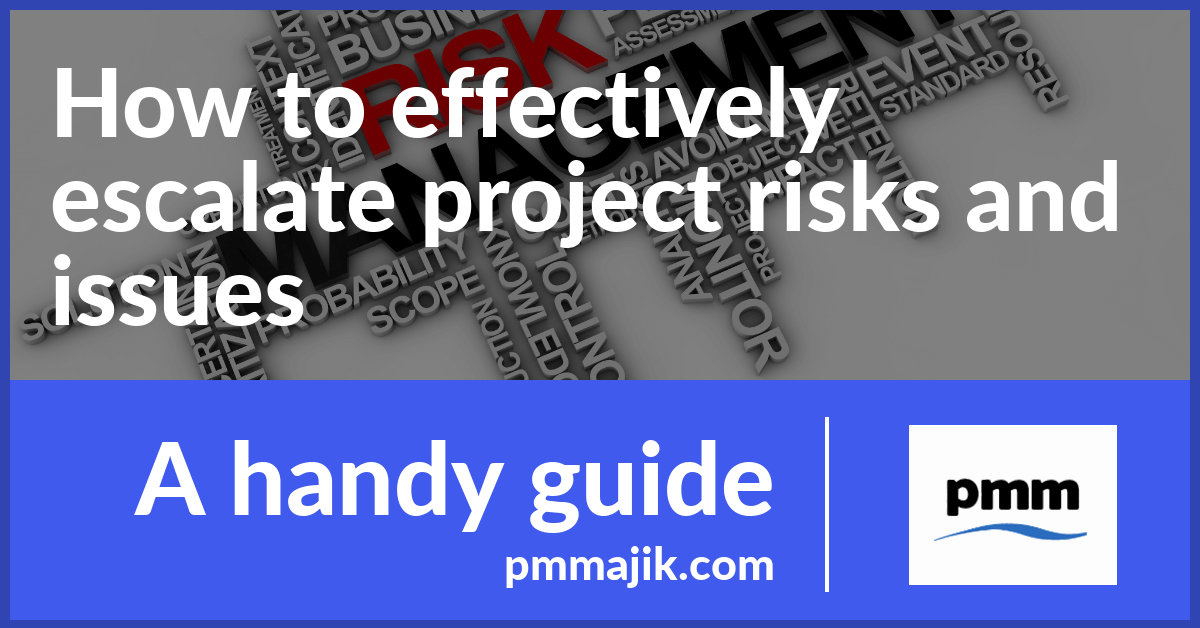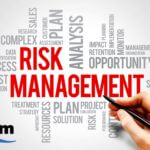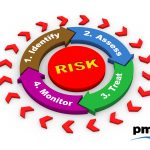Ineffective escalation practices can seriously impact a project. There is an art to finding the perfect balance for when and how to escalate.
Escalating too quickly (and too often) can cause your project stakeholders to lose faith in the escalations and ignore them. Escalating too late may not provide enough lead time to resolve the issue before it significantly impacts the project.
Escalation Definition
An escalation is the process of calling upon higher levels of project leadership or management to resolve an issue.
First, it is important to acknowledge that some issues will sneak up on you. One day all things are moving forward and everything is on track, and the next morning there is a critical issue. The key to handling these is to have identified the possible issues and created a mitigation plan that can be quickly implemented.
You can find more information on creating mitigation plans in the article PMO Risk Management Plan.
“Creeper” Issues
Most projects will also have “creepers issues”. Those issues that are peering around the corner – instinct tells you they are coming or that they are going to cause significant impact. The “Escalate early and escalate often” mantra is what you will want use.
Think of escalation in 3 levels:
- Awareness
- Highlight the Risk
- Sound Alarm
Awareness
This is when you first recognize the risk. It is not currently in the way, but it is a possible issue.
At this point, add the risk to your risk register.
Make the project stakeholders aware that the risk could impact the project. This might be in a project meeting or highlighted in a communication.
It is important that the concern is communicated and the possible mitigation strategies are discussed and agreed upon. At this stage, your stakeholders and project team can give you direction when to further escalate the issue.
Highlight the Risk
Moving to this level is a judgement call. Look at the probability of the risk impacting the project and the severity of the impact. These are the factors that will help you understand if additional escalation is needed. If these are high, begin to highlight these risks frequently.
Once a risk is on this High Probability/High Impact list, it should be noted on nearly every project status report, highlighted in every project meeting and communication.
If you are mitigating ensure you let the team know that you are still managing it. But you want to make management aware that you have put the mitigation plan into action. When the probability and severity is high, don’t be shy about communicating these concerns.
Sound Alarm!
The impact of the risk is approaching. Again, a judgement call – when do you start jumping up and down, waving flags? You don’t want to do this for every risk, you will be exhausted, and your stakeholders will not hear you after a while.
The approach on these risks will be unique based on your organization.
During your stakeholder analysis, there should be a clear understanding on the views on what kinds of decisions or risks need to be escalated. It is important to also gather “how” the stakeholders would like risks to be escalated.
Let’s be honest, stakeholders might not look at status report or read project communications unless they are specifically asked.
When sounding the alarm, saying “I documented it in the status report” is not sufficient. This is a time to make phone calls, call special meetings, etc. Whatever is needed to get the attention of the stakeholders.
Remember risks can jump directly to “Sound Alarm” without them formerly being captured on the issues register, selecting an escalation path for each issue or risk is the project managers decision. Start escalating as soon as a critical problem is not receiving adequate attention.
Summary
Escalation is a communication skill and the ability to effectively escalate is a critical for the project’s success.
Putting in time and effort to identify potentially risks and capturing them on the risk register is an important activity.
Developing risk mitigation plans for, at a minimum, the high impact / high probability risks is important. This will save time if the risk materializes into an issue.
Risk and issue management is not a one-off event. The project manager must be identifying, reviewing and managing risks on an ongoing basis.






